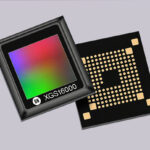ASIA ELECTRONICS INDUSTRYYOUR WINDOW TO SMART MANUFACTURING
Azbil's New Gauges Achieve Resistance to Deposition
Azbil Corporation has released the new model V8 sapphire capacitance diaphragm gauges. Particularly, they employ MEMS*1 processing technology to enhance resistance to deposition*2 on the sensor.
As part of the continuing evolution of semiconductor manufacturing, the front-end film deposition and etching processes now use a wider variety of gases. Depending on the process gas used, film deposits may form on the sensor diaphragm of the vacuum gauge used in these processes, resulting in a shift of its zero point.
For that reason, operators of film deposition and etching equipment need to adjust the vacuum gauge more frequently. Hence, interfering with manufacturing plans.
Shorter Process Downtime
Azbil has in the past developed products to deal with this problem, which continues to occur with the use of new gases. In seeking a better solution, Azbil has thoroughly redesigned its current sapphire capacitance diaphragm gauge and released the model V8. Accordingly, the new model has a sensor with a new structure, flow path, among others.
The use of MEMS technology makes the sensor chip’s surface uneven, helping to break up film deposited on the sensor diaphragm. Most importantly, there is a better balance of stress*3, making the diaphragm surface less likely to flex. As a result, the amount of zero point shift in the model V8 due to film deposits has been dramatically reduced to one-tenth that of the existing model SPG.
The model V8S features a control unit separate from the gauge head. Thus, allowing use in temperatures as high as 250 °C. Such high-temperature environments are available in atomic layer deposition (ALD)*4 equipment due to changes in the process gas.
Features
The new model has higher resistance to deposition on the sensor. With MEMS technology, the amount of zero point shift due to film deposits formed on the sensor has been reduced to one-tenth that of the model SPG.
The V8 model has resistance to temperatures as high as 250 °C. The model V8S (separated model) for high temperatures is an addition to the lineup in response to changes in the process gases.
Furthermore, the model comes in compact size with smaller footprint. By arranging components more efficiently inside the product, its volume has been reduced by 40 perent compared to the model SPG.
Notes
*1 Microelectromechanical systems. Various devices or systems such as sensors that incorporate microscopic electrical and mechanical elements on one chip.
*2 In semiconductor manufacturing, this refers to a film formation process that produces a thin film.
*3 The force generated inside a component when it receives an external force.
*4 A film deposition technology used in a vacuum.




